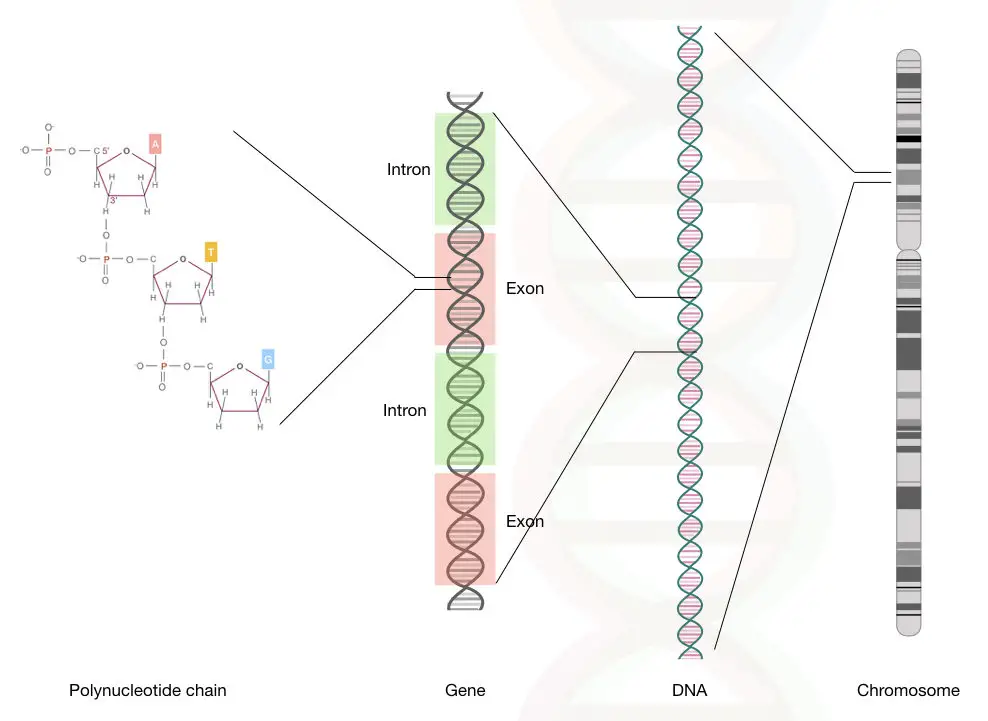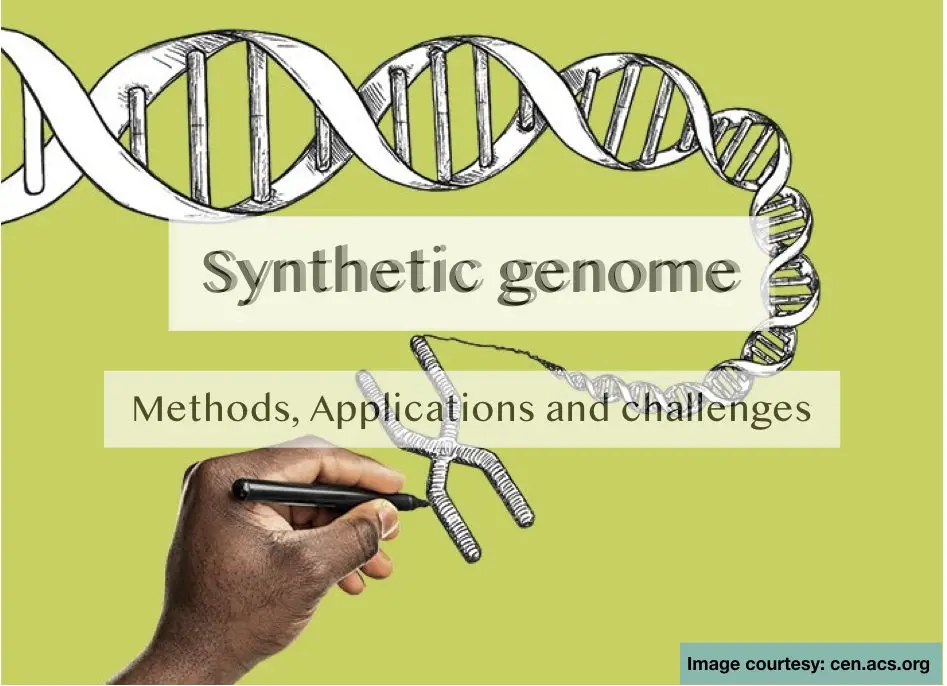“Junk DNA indeed isn’t junk, a huge portion of our genome performs important functions for life. Although made up of sequences that can’t form proteins.”
Our DNA is the simplest molecule made up of nitrogenous bases sugar and phosphate only. But it has become a complex one when wrapping in the genome. Our own set of DNA is known as the “genome.”
Junk DNA is less known, if someone knows, they only know that it regulates gene expression. But it has actions way more than that. And that’s why researchers are now focusing more on the non-coding- junk! Rather than on encoding-genes.
“Genomics” is a complex field of study, Genomes vary between organisms and species, in terms of size, share and No. of genes. But interestingly, the percentage of junk DNA also differs.
The human genome has 3.2 billion base pairs in which 2 to 3% of the portion manufacture proteins and therefore considered as ‘useful’. Technically, we can say, the part is well-studied.
And the rest around 97% has no power to translate into protein. Due to this reason, in the past, it was labeled as “junk”. But now it is known as non-coding DNA, which I think is more precise.
You may wonder what might be the difference? The coding DNA transcribes into the mRNA and translates into protein. But the non-coding DNA has not been directly making protein. And therefore considered non-coding or Junk DNA.
Before going ahead in the article, we need to understand a little bit regarding DNA, especially how it works. DNA is everything for a life to earn. Our skin color, eye color, metabolic rate, development, reproductive activities, how we talk, walk and behave are controlled by DNA- genes.
We can say it’s an instruction manual for life.
Related article: Why is the so-called Junk DNA Important for Us?
Key Topics:
What is Junk DNA?
In 1972, Susumu Ohno coined the term “Junk DNA” although it was known to us since 1960. David C was the person who studied the nature of non-coding DNAs.
Over a while, many names came such as selfish DNA, nonfunctional DNA or non-coding DNA. None precisely explains the concept thoroughly. However, the term non-coding region or non-coding DNA best suits as it actually can’t form protein instead helps in making.
Here it is also very important to discuss the topological features of junk DNA. The non-coding DNA has a different topology compared with the coding genes.
These regions are tightly wrapped, methylated, compactly packed and heterochromatin in nature. Meaning, it doesn’t allow transcription. Meaning, it can’t allow enzymes to settle and do transcription.

Definition:
The junk DNA, often known as “non-coding DNA” is a large part of our genome that doesn’t encode proteins but helps in genome regulation and other activities.
What are the properties of junk DNA?
non-coding/junk DNA has several specific properties which makes them unique in the genome. Here we have enlisted some of the most unique among them.
- Junk DNA can’t encode protein
- It can’t be said as “genes”.
- It can transcribe but can’t undergo translation.
- Junk DNA is mostly GC-rich sequences.
- Structurally, those are repetitive DNA sequences.
- STR and VNTR are two common markers located in the non-coding region.
- Highly conserved
What are the functions of junk DNA?
The full functionality of the junk portion is yet not fully understood, however, in recent years, scientists have studied several common functions, here they are:
- Regulation of gene expression
- Genome regulation
- Maintaining genome integrity
- Role in the process of evolution
- Functional non-coding RNA
- Regulation of transcription and translation
- Origin of DNA replication
- Centromere and telomere regulation (structural chromosomal elements)
- Scaffold attachment regions
- Regulatory sequences
- Provides biodiversity
- Prevent aging
- Protein and enzyme binding sites.
Examples of Junk DNA:
As new information comes out every year, researchers get more interest in functional genomics, especially in junk DNA and its function. They also have identified some of the regions, named them and studied their functions.
Introns, Transposons, pseudogenes, non-coding RNAs, Telomeres, Repetitive sequences, regulatory elements are some known non-coding DNAs.
Each non-coding DNA and its function are discussed here.
Introns:
Introns are the most studied and well-known non-coding sequence having a significant role in transcription, forming transcript. Introns are actually, repetitive DNA spanning between exons- coding sequences of a gene.
Notedly, introns are present in the pre-mRNA but removed before forming the final mature mRNA. The process called RNA splicing helps in removing introns.
Broadly, introns function to form mature mRNA and regulate gene expression.
Transposons:
Yet another most commonly studied junk DNA type is the transposons, often known as Transposable elements or even mobile genetic elements. TEs have a role in forming new genes and providing functional diversity to the genome.
The transposons can move from one location to another in the genome. On the negative side, it also causes harmful/ lethal mutations too.
Transposons are inactive for thousands of years in the human genome. LINEs, SINEs and retrotransposons are several examples of mobile genetic elements.
A list of articles in this category helps you to understand the topic better:
Category: Transposons (9)
Pseudogenes:
Pseudogenes are not true functional genes, indeed. They can transcribe into the RNA but make a protein. This group of DNA can not manufacture protein.
Scientists believe that the pseudogenes are supposed to be evolved through retrotransposition or genomic duplication. Unlike other junk DNA segments, pseudogenes have a crucial function to perform- regulating gene expression.
Transcribed pseudogenes form RNAs known as siRNAs or miRNA which though can’t translate but degrade mRNA transcript to regulate gene expression.
Explore further on this topic reading this article:
Telomeres:
Telomeres are the extreme edges of the chromosomes, structurally are the repetitive DNA sequences and non-coding.
Noteworthy, like other junk DNAs, it can’t participate to make a protein but solve the end replication problem. You can say, it protects genes located on the arms.
Regulatory elements:
This topic is interesting too, I can write a whole article on it, so we will discuss it in some separate article surely. But let me briefly introduce it to you.
Regulatory elements are sequences that are located near or far away from genes that regulate transcription or translation. Those can be categorized as Cis and trans-regulatory elements.
Enhances, promoters and inducers are some of the examples.
Repetitive sequences:
Repetitive sequences are duplex or triplet repetitive DNA that regulate protein manufacturing. Change in the number of repeats causes serious health issues.
For example, expansion of CAG repeats causes Huntington’s disease.
Read this article to know more: Triplet repeats expansion disorders.
How much of the human genome is junk DNA?
Scientists say that 22,000 to 25,000 genes are active, meaning they are well-studied. This comprises only 2 to 3% of the genome. Meaning, the rest of the DNA is noncoding or can’t form protein.
97% to 98.5% of the human genome is junk DNA/ non-coding or garbage we can say. This part mainly has transposons & mobile genetic elements, telomeres, centromeres, non-coding RNAs, pseudogenes, Repetitive sequences, Regulatory elements and introns.
According to discovery magazine 98.5% part of the genome is junk DNA. However, an article written in Mint stated that 75% of our genome is noncoding and 10 to 15% with the upper limit of 25% portion of our genome is functional. They didn’t clarify whether they have only counted protein-coding genes or other functional elements.
According to the article published by Palazzo A in NCBI, around 90% of the genome is non-coding. The chart given below shows the exact amount of different non-coding DNA and their prevalence in the genome.

Wrapping up:
Junk DNA is a complex thing, which varies between organisms and even between individuals. Some functions are known to us but they are functionally different in different organisms.
For example, Palazzo A explained this point with an amazing example of Onion. Regulating gene expressions, maintaining chromosome structure, preventing replication errors, and mutations then why onions have five times more non-coding DNA than humans?
The present article has contained basic information on junk DNA like the definition, structure and function, etc. But interestingly, there is a lot more we need to learn on this topic, for example, how the junk DNA is a superpower? What is the role of junk DNA in evolution and why is it important?
All these points we will discuss in the next section of this series. If you wish to learn more you can refer to the sources given below.
Sources:
- Palazzo AF, Gregory TR. The case for junk DNA. PLoS Genet. 2014;10(5):e1004351. Published 2014 May 8. doi:10.1371/journal.pgen.1004351
- Doolittle WF. Is junk DNA bunk? A critique of ENCODE. Proc Natl Acad Sci U S A. 2013;110(14):5294-5300. doi:10.1073/pnas.1221376110.
- Wong GK, Passey DA, Huang Y, Yang Z, Yu J. Is “junk” DNA mostly intron DNA? Genome Research. 2000 Nov;10(11):1672-1678. DOI: 10.1101/gr.148900.


